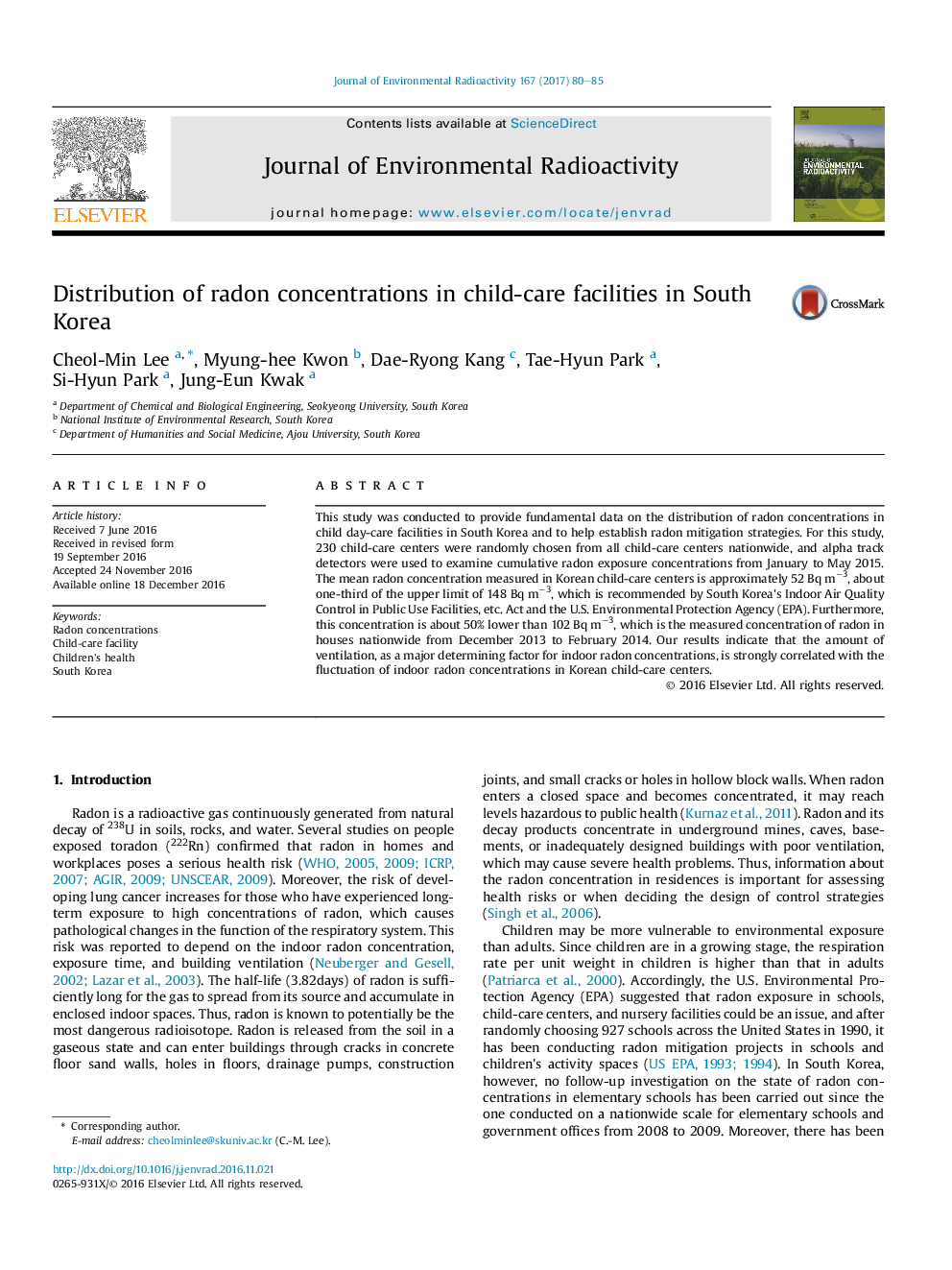| Article ID | Journal | Published Year | Pages | File Type |
|---|---|---|---|---|
| 5477659 | Journal of Environmental Radioactivity | 2017 | 6 Pages |
Abstract
This study was conducted to provide fundamental data on the distribution of radon concentrations in child day-care facilities in South Korea and to help establish radon mitigation strategies. For this study, 230 child-care centers were randomly chosen from all child-care centers nationwide, and alpha track detectors were used to examine cumulative radon exposure concentrations from January to May 2015. The mean radon concentration measured in Korean child-care centers is approximately 52 Bq mâ3, about one-third of the upper limit of 148 Bq mâ3, which is recommended by South Korea's Indoor Air Quality Control in Public Use Facilities, etc. Act and the U.S. Environmental Protection Agency (EPA). Furthermore, this concentration is about 50% lower than 102 Bq mâ3, which is the measured concentration of radon in houses nationwide from December 2013 to February 2014. Our results indicate that the amount of ventilation, as a major determining factor for indoor radon concentrations, is strongly correlated with the fluctuation of indoor radon concentrations in Korean child-care centers.
Keywords
Related Topics
Physical Sciences and Engineering
Energy
Nuclear Energy and Engineering
Authors
Cheol-Min Lee, Myung-hee Kwon, Dae-Ryong Kang, Tae-Hyun Park, Si-Hyun Park, Jung-Eun Kwak,
